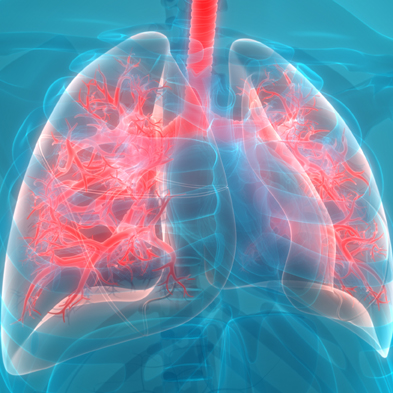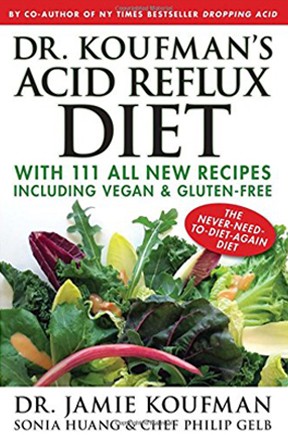At-A-Glance
- Pneumonia is generally considered to be an infection of the lungs caused by viruses and bacteria. Community-acquired pneumonia — pneumonia acquired/occurring outside a healthcare setting — is the most common type of pneumonia, and it may be mild as a cold or the flu, or severe enough to require hospitalization.
- Respiratory Reflux (LPR) is rarely recognized by physicians as a cause of pneumonia; however, reflux-aspiration events are a common cause of pneumonia; notably, many elderly in nursing homes die of reflux-caused aspiration pneumonia.
- Aspiration pneumonia can result if one inhales food, drink, vomit, or refluxed stomach contents into the lungs. Indeed, recurrent pneumonia in an otherwise-healthy person is usually due to nocturnal reflux aspiration with a predictable onset pattern — feels well the night before — maybe a big late dinner — and in the morning, sick with pneumonia.
Note: Respiratory Reflux (RR) and Laryngopharyngeal Reflux (LPR) are synonyms, and the terms can be used interchangeably. Going forward, I prefer the term RR and so should you: it is easier to pronounce, more intuitive, and it implies that RR can affect any and all parts of the respiratory system, which it does.
Community-Acquired Pneumonia — pneumonia contracted outside of a healthcare setting — is a leading cause of hospitalization and death. It is usually caused by viruses (rhinovirus, influenza- and non-influenza respiratory viruses, Covid-19) and bacteria (Streptococcus pneumoniae (pneumococcal pneumonia), Mycoplasma, and Legionella).
Mycoplasma causes “walking pneumonia,” which usually occurs in the fall and winter; it is usually a relatively mild pneumonia that rarely requires hospitalization; and it accounts for about one-third of community-acquired pneumonia cases.
Also common is pneumococcal pneumonia. Pneumococcal infections can cause ear, nose, throat, and sinus infections as well as pneumonia. Pneumococcal pneumonia is potentially a very serious disease in the elderly and those who are immunocompromised. Pneumococcal vaccines are available to prevent pneumococcal infections, and are recommended by many physicians for their higher-risk patients.
Respiratory Reflux and Aspiration Pneumonia
But, there is another major cause of community-acquired pneumonia, especially recurrent pneumonia: Respiratory Reflux (RR) aka LPR … “reflux aspiration.”
According to a Mayo Clinic article, “Aspiration pneumonia occurs when you inhale food, drink, vomit or saliva into your lungs. Aspiration is more likely if something disturbs your normal gag reflex, such as a brain injury or swallowing problem, and excessive use of alcohol or drugs.”
Nowhere in the Mayo Clinic article do the words “Reflux,” “GERD,” “LPR,” or “Respiratory Reflux” appear in relation to aspiration or pneumonia. I though that this might be just a Mayo oversight, so I checked WebMD and the Cleveland Clinic websites, too … and same thing, no mention of reflux.
It is interesting that so many elderly people in nursing homes die of “community-acquired pneumonia,” but with no pathologic organism ever identified. Here’s what I think: Give an elderly refluxer a bedtime snack of say chocolate pudding and ginger ale — and that’s what ends up in their lungs at two o’clock in the morning — they die of chocolate-pudding-ginger-ale pneumonia.
Apparently, residents of nursing homes are required by law to be asked if they want bedtime snacks. CMS (the Centers for Medicare & Medicaid Services) regulations on meals and feedings at nursing homes require, “Suitable, nourishing alternative meals and snacks must be provided to residents who want to eat at non-traditional times or outside of scheduled meal service times,” including, “a nourishing snack at bedtime.” Maybe this regulation should be changed?
Recurrent Reflux-Aspiration Pneumonia
Case 1: A 75-year-old retired Wall-Streeter presented to me with chronic cough of 10 years duration. The cough was disruptive and productive, usually worse the first thing in the morning and after evening meals. He was a thin, life-time non-smoker, non-drinker with mild diabetes and psoriatic-arthritis.
A CT-scan of the chest had revealed diffuse ground-glass opacities, centered mostly around the bronchi with the periphery of the lungs being clear. In my experience, that pattern is seen in people with chronic-intermittent reflux aspiration. Indeed, the patient’s exam and reflux-testing confirmed that he had severe respiratory reflux.
Case 2: A 38-year-old, New York attorney came to see me with chief complaints of post-nasal drip, too-much mucus, chronic throat-clearing, and hoarseness; and her voice problem was affecting her work. She was somewhat over-weight but was an otherwise-healthy, non-smoker. She was, however, a heavy “social” drinker. Most notable in her history: she had had pneumonia four times in five years.
What caused the pneumonias? I questioned her about the most recent pneumonia episode, three-months prior to seeing me. She remembered having had a late dinner at a famous mid-town steak house. Her meal? She had a rib-eye steak with a “fully-loaded” baked potato, asparagus with béarnaise sauce, and a flowerless chocolate cake for dessert. In addition, she drank two cocktails and three glasses of red wine during the evening.
She left the restaurant at 10:30 p.m., and at 11:00, she arrived home “stuffed-to-the-gills” and drunk. Shortly thereafter, she passed out on the sofa with her clothes on. She awoke coughing at 2:00 a.m., and then undressed and went to bed.
In the morning her voice was almost gone; she had excessive chest and throat mucus, and a wet, productive cough. She went to work, but my mid-afternoon she had a fever, was coughing uncontrollably; and so she went home. The next day she was worse; her fever was 102o and besides the cough, she was having difficulty breathing and shortness of breath. So she went to an Urgent Care facility. The doctor there listened to her chest, got a chest x-ray, and told her that she had pneumonia in both lungs. Her put her on a broad-spectrum antibiotic, oral prednisone (steroids), and sent her home.
Patterns of Reflux
Both of the above cases had severe respiratory reflux and both responded well to treatment. Interestingly, both also bought mechanical beds so that they could sleep up at a high angle, much higher (like 45-degrees) than you get with a reflux pillow or wedge.
There are two patterns of reflux aspiration, big/fast and little/slow.
The first: The patient, who was well the night before, is deathly sick the next morning … the nursing home situation. In those patients, the reflux aspiration event is sudden and massive, meaning that the lungs are filled with acid, pepsin, residual-food, and anything else in the stomach. In this case, the reflux aspiration event can lead to death.
In general, the severity of aspiration pneumonia depends upon the volume (amount) and the acidity of that which is aspirated. (More acidic reflux aspiration does more damage than neutral-pH reflux.) In a nutshell, the bigger the volume of aspiration, the more severely the lungs are affected.
The second pattern? Many people have chronic “micro-aspiration” events over many months or years; and this is commonly associated with COPD and Chronic Bronchitis and Cough. There is no way to understand why some people with RR seem to protect their lungs and don’t have aspiration, while others aspirate. Meanwhile, reflux aspiration is a very common problem that usually goes undiagnosed.









